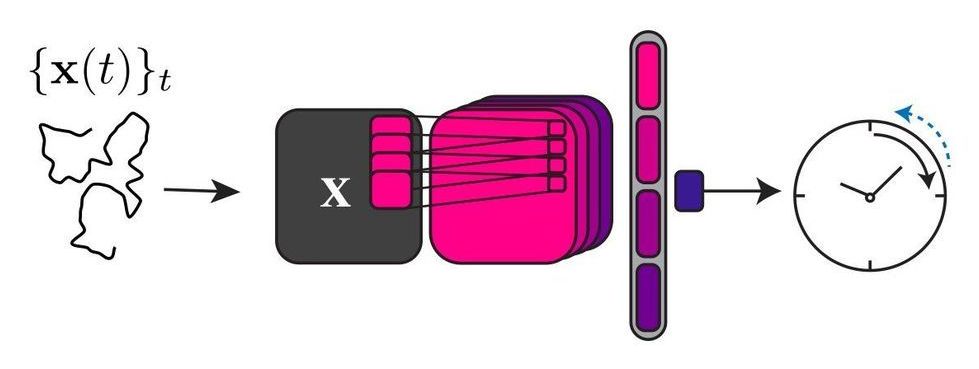Artificial and modified organisms could become essential tools to fight climate change, clean up pollution, protect biodiversity, and more.
(Reuters) — India’s richest state Maharashtra has invited U.S. electric-car maker Tesla Inc, weeks after its Chief Executive Officer Elon Musk suggested entering the country next year.
In a tweet here on Thursday, state tourism and environment minister Aaditya Thackeray said he and industries minister Subhash Desai held a video call with Tesla executives earlier in the day to invite them to the state.
Earlier this month, Musk said “Next year for sure” on Twitter in reply to a post with a photograph of a T-shirt with the message: “India wants Tesla”.
Morgan Stanley doubled its long-term valuation estimate for Elon Musk’s SpaceX on Thursday and is now expecting the company to be worth at least $100 billion due to its position in the growing space industry.
A new Tesla software leak revealed that the automaker is planning to bring a HEPA filter, enabling Tesla’s Bioweapon Defense Mode, to Model Y.
With the Model X and later the Model S, Tesla has started to put massive HEPA-rated air filters inside its vehicles.
The idea is for Tesla to put efforts into developing a more powerful air filtering system in order to not only contribute to the reduction of local air pollution with electric vehicles but also to reduce the direct impact of air pollution on the occupants of its vehicles.
Machine learning (ML) is making incredible transformations in critical areas such as finance, healthcare, and defense, impacting nearly every aspect of our lives. Many businesses, eager to capitalize on advancements in ML, have not scrutinized the security of their ML systems. Today, along with MITRE, and contributions from 11 organizations including IBM, NVIDIA, Bosch, Microsoft is releasing the Adversarial ML Threat Matrix, an industry-focused open framework, to empower security analysts to detect, respond to, and remediate threats against ML systems.
During the last four years, Microsoft has seen a notable increase in attacks on commercial ML systems. Market reports are also bringing attention to this problem: Gartner’s Top 10 Strategic Technology Trends for 2020, published in October 2019, predicts that “Through 2022, 30% of all AI cyberattacks will leverage training-data poisoning, AI model theft, or adversarial samples to attack AI-powered systems.” Despite these compelling reasons to secure ML systems, Microsoft’s survey spanning 28 businesses found that most industry practitioners have yet to come to terms with adversarial machine learning. Twenty-five out of the 28 businesses indicated that they don’t have the right tools in place to secure their ML systems. What’s more, they are explicitly looking for guidance. We found that preparation is not just limited to smaller organizations. We spoke to Fortune 500 companies, governments, non-profits, and small and mid-sized organizations.
Our survey pointed to marked cognitive dissonance especially among security analysts who generally believe that risk to ML systems is a futuristic concern. This is a problem because cyber attacks on ML systems are now on the uptick. For instance, in 2020 we saw the first CVE for an ML component in a commercial system and SEI/CERT issued the first vuln note bringing to attention how many of the current ML systems can be subjected to arbitrary misclassification attacks assaulting the confidentiality, integrity, and availability of ML systems. The academic community has been sounding the alarm since 2004, and have routinely shown that ML systems, if not mindfully secured, can be compromised.
Just a matter of time.
In a new report, the International Energy Agency (IEA) says solar is now the cheapest form of electricity for utility companies to build. That’s thanks to risk-reducing financial policies around the world, the agency says, and it applies to locations with both the most favorable policies and the easiest access to financing. The report underlines how important these policies are to encouraging development of renewables and other environmentally forward technologies.
☀️ You love renewable energy. So do we. Let’s nerd out over it together.
The second law of thermodynamics delineates an asymmetry in how physical systems evolve over time, known as the arrow of time. In macroscopic systems, this asymmetry has a clear direction (e.g., one can easily notice if a video showing a system’s evolution over time is being played normally or backward).
In the microscopic world, however, this direction is not always apparent. In fact, fluctuations in microscopic systems can lead to clear violations of the second law of thermodynamics, causing the arrow of time to become blurry and less defined. As a result, when watching a video of a microscopic process, it can be difficult, if not impossible, to determine whether it is being played normally or backwards.
Researchers at University of Maryland developed a machine learning algorithm that can infer the direction of the thermodynamic arrow of time in both macroscopic and microscopic processes. This algorithm, presented in a paper published in Nature Physics, could ultimately help to uncover new physical principles related to thermodynamics.
Circa 2013
A far-flung team is trying to build the first digital lifeform to work out the basic principles of the brain.
Circa 2018
After 12 years of work, researchers at the University of Manchester in England have completed construction of a “SpiNNaker” (Spiking Neural Network Architecture) supercomputer. It can simulate the internal workings of up to a billion neurons through a whopping one million processing units.
The human brain contains approximately 100 billion neurons, exchanging signals through hundreds of trillions of synapses. While these numbers are imposing, a digital brain simulation needs far more than raw processing power: rather, what’s needed is a radical rethinking of the standard computer architecture on which most computers are built.
“Neurons in the brain typically have several thousand inputs; some up to quarter of a million,” Prof. Stephen Furber, who conceived and led the SpiNNaker project, told us. “So the issue is communication, not computation. High-performance computers are good at sending large chunks of data from one place to another very fast, but what neural modeling requires is sending very small chunks of data (representing a single spike) from one place to many others, which is quite a different communication model.”









